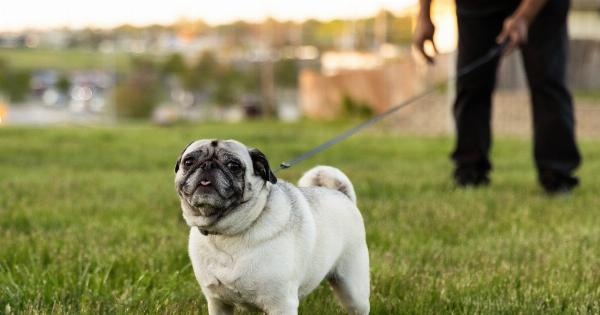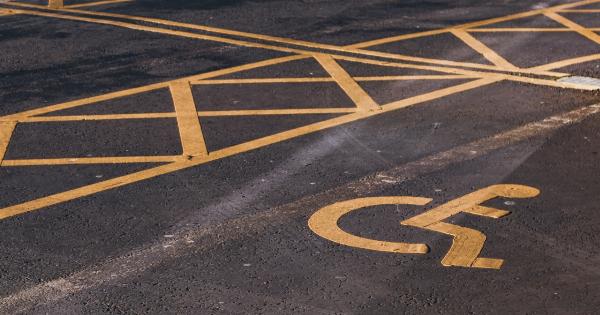Taking your dog for a walk is a great way to provide them with exercise and mental stimulation. However, it’s important to consider the consequences of taking your dog off the leash.
While some dog owners may feel that their canine companions are well-behaved and obedient enough to roam freely, there are potential risks and negative outcomes associated with off-leash walks. In this article, we will explore the potential consequences of taking your dog off the leash.
1. Safety hazards for your dog
One of the primary concerns when letting your dog off the leash is their safety. Even the most well-trained dogs can become distracted or tempted by various stimuli in their environment.
They might chase after a squirrel, run onto a busy road, or encounter aggressive dogs or wild animals. Without the physical restriction of a leash, dogs are more likely to engage in risky behaviors that could lead to accidents, injuries, or even fatal incidents.
2. Legal implications
Off-leash dogs can pose legal issues for their owners. Many municipalities have laws and regulations governing dog leash requirements. Failing to comply with these laws can result in hefty fines, citations, or other legal consequences.
Additionally, if an off-leash dog causes harm to another person, pet, or property, the owner may be held liable for any damages or injuries incurred, leading to further legal complications.
3. Disturbing wildlife and ecosystems
When dogs are off the leash, they have the potential to disturb local wildlife and ecosystems. Dogs instinctively chase after animals, disrupt natural habitats, and potentially harm fragile ecosystems.
Bird nests, small mammals, and reptiles can be easily disturbed by unleashed dogs, causing significant disruptions in local wildlife populations. Furthermore, dog waste left behind can introduce bacteria and parasites into natural environments, further impacting local ecosystems.
4. Negative interactions with other dogs and people
Not all dogs have the same temperament or social skills. When an off-leash dog encounters a leashed or restrained dog, the situation can quickly escalate into aggression or anxiety.
Even if your dog is friendly, approaching an unknown dog can cause fear and defensive behaviors in the other dog, potentially leading to fights or other negative interactions. Additionally, some people may have a fear of dogs or may be allergic, making unexpected encounters with off-leash dogs distressing or even dangerous.
5. Loss of control and behavior regression
Regular leash training plays a crucial role in reinforcing a dog’s obedience and ensuring their safety. When dogs are consistently off the leash, they may start to exhibit unwanted behaviors or regress in their training.
They might become more independent, less responsive to commands, or develop selective hearing, making it challenging to control and manage them even when they are on a leash. This loss of control can lead to a breakdown in communication and potentially dangerous situations.
6. Accidents and injuries to others
Unleashed dogs can also pose a risk to other people and animals. Even if your dog is friendly and well-behaved, they might unintentionally cause accidents or injuries.
For example, a dog running up to a person or another leashed dog may startle them, causing them to trip, fall, or become injured. Such incidents can result in physical harm, emotional distress, or even legal action against the dog owner.
7. Increased vulnerability to hazards and dangers
By removing the leash, you remove a layer of protection that keeps your dog safe from potential hazards. Dogs may be at risk of ingesting toxic substances, consuming spoiled food, encountering unfamiliar plants or insect bites, or getting lost.
A leash allows you to guide and redirect your dog away from dangers, keeping them away from risk and harm.
8. Reinforcing boundary and socialization skills
On-leash walks provide an opportunity to reinforce your dog’s boundaries and improve their socialization skills.
Teaching your dog to walk calmly on a leash and interact politely with other dogs and people builds their confidence and manners, making them more well-rounded pets. Regular leash walks also help establish a routine, which can contribute to a balanced and well-behaved dog.
9. Maintaining public trust and respect
Keeping your dog on a leash demonstrates respect for other people, pets, and public spaces. By adhering to leash laws and guidelines, you show consideration for others and maintain public trust.
This trust can foster positive relationships with fellow dog owners, neighbors, and community members, ultimately creating a safer and more harmonious environment for everyone.
10. Alternative options for exercise and mental stimulation
If you’re concerned about providing your dog with sufficient exercise and mental stimulation while keeping them on a leash, there are alternative options to consider.
Engaging in activities such as interactive play, puzzle toys, obedience training, and other forms of mental stimulation can help keep your dog physically and mentally active, reducing the need for off-leash walks.
Conclusion
While it may be tempting to let your dog roam freely off the leash, the potential consequences outweigh the benefits.
Prioritizing your dog’s safety, the well-being of others, and the preservation of the environment should be at the forefront of every dog owner’s mind. By keeping your dog on a leash, you can mitigate potential risks and ensure that your furry friend enjoys their walks in a controlled and safe manner.































